Quality Living Styles
Vegetarian Sources of Protein, November, 2012 Tips
Health Benefits and a list of Vegetarian Sources of Protein
Some meat products like eggs, and dry beans and peas, nuts, and seeds supply many nutrients. These include protein, B vitamins (niacin, thiamin, riboflavin, and B6), vitamin E, iron, zinc, and magnesium.
Proteins function as building blocks for bones, muscles, cartilage, skin, and blood. They are also building blocks for enzymes, hormones, and vitamins. Proteins are one of three nutrients that provide calories (the others are fat and carbohydrates).
B vitamins found in this food group serve a variety of functions in the body. They help the body release energy, play a vital role in the function of the nervous system, aid in the formation of red blood cells, and help build tissues.
Iron is used to carry oxygen in the blood. Many teenage girls and women in their child-bearing years have iron-deficiency anemia. They should eat foods high in heme-iron (meats) or eat other non-heme iron containing foods along with a food rich in vitamin C, which can improve absorption of non-heme iron.
Magnesium is used in building bones and in releasing energy from muscles. Zinc is necessary for biochemical reactions and helps the immune system function properly.
![]()
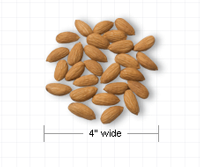
Almonds
Almonds, one ounce equals about 25 almonds. In the Protein Foods Group, this amount counts as 2 ounce equivalents protein foods and 2 teaspoons of oil.
Cashews
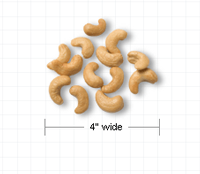
Cashews, one ounce is equal to about 13 cashews
In the protein Foods Group, this amount counts as 2 ounce equivalents protein foods and 2 teaspoons oil.
Walnuts
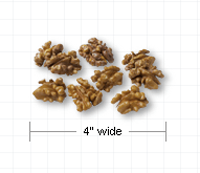
Walnuts, an ounce is equal to about 9 walnuts, in the Protein Foods Group, this counts as 2 ounce equivalents protein foods and 2 teaspoons oil.
Mixed Nuts
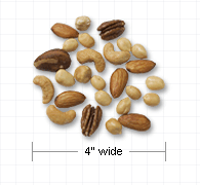
Mixed Nuts, one ounce of mixed nut in the Protein Foods Group, counts as 2 ounce equivalents protein foods, plus 2 tsp oil.
Cooked Black Beans
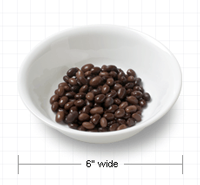
Cooked Black Beans = ½ cup In the Protein Foods Group, this counts as 2 ounce equivalents protein foods.
Cooked Kidney Beans
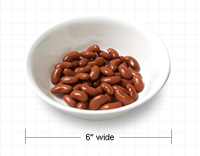
Cooked Kidney Beans = ½ cup In the Protein Foods Group this counts as 2 ounce equivalents of protein foods.
Cooked Pinto Beans
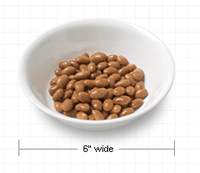
Cooked Pinto Beans= ½ cup In the Protein Foods Group it counts as 2 ounce equivalents of protein foods
![]()
What Are the Benefits of Eating Nuts and Seeds?
Eating peanuts and certain tree nuts (i.e., walnuts, almonds, and pistachios) may reduce the risk of heart disease when consumed as part of a diet that is nutritionally adequate and within calorie needs. Because nuts and seeds are high in calories, eat them in small portions and use them to replace other protein foods, like lentils, tofu and other meat alternate foods. Eat unsalted nuts and seeds to help reduce sodium intakes.
![]()
Sources
Information for this article was obtained from the source listed below. If you would like more information, please click the link below.
![]()
If you have any interesting tips to share please email them to 
You may also reach me via my
contact information at
Contact
Now quickly and easily navigate to your next destination.